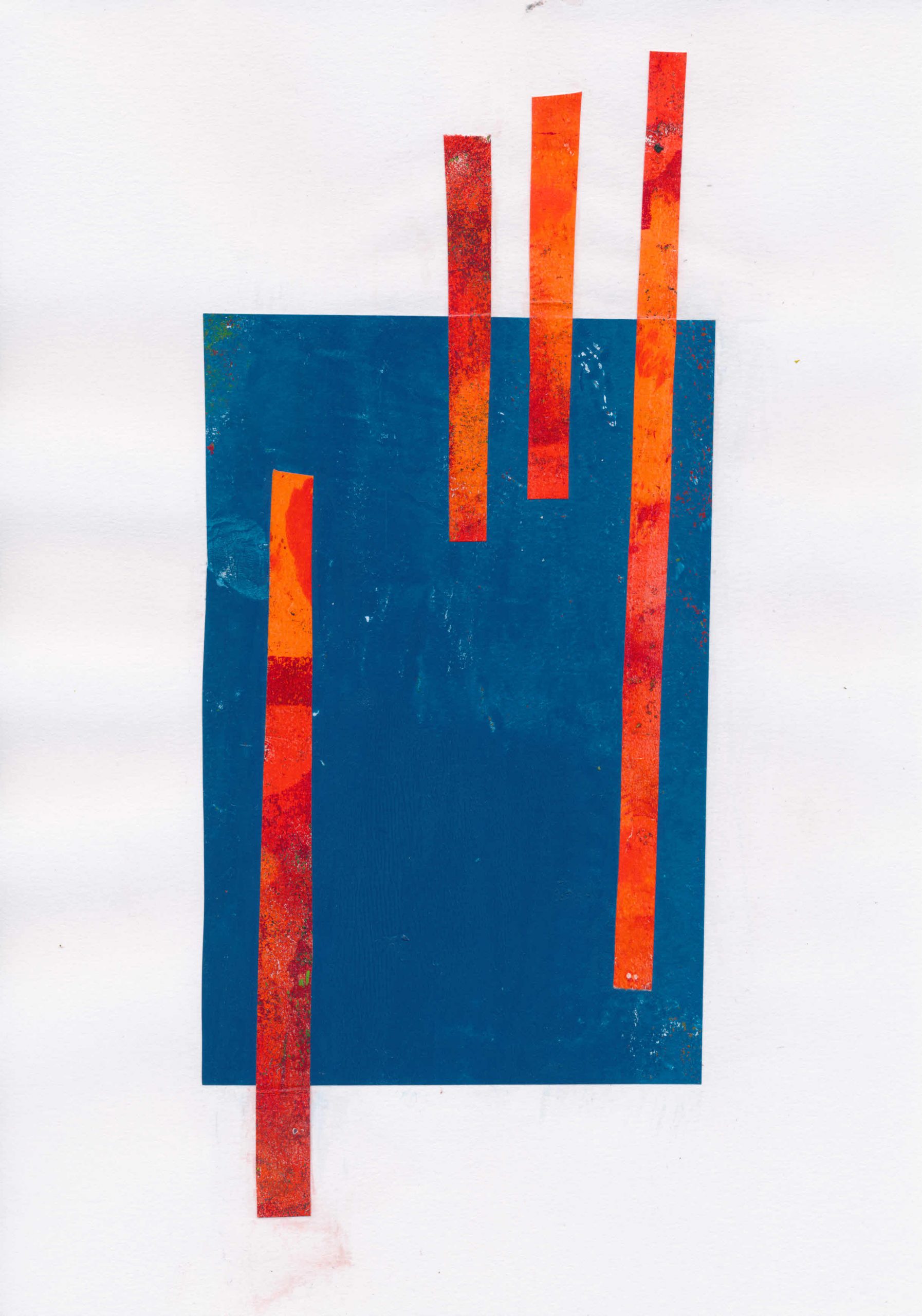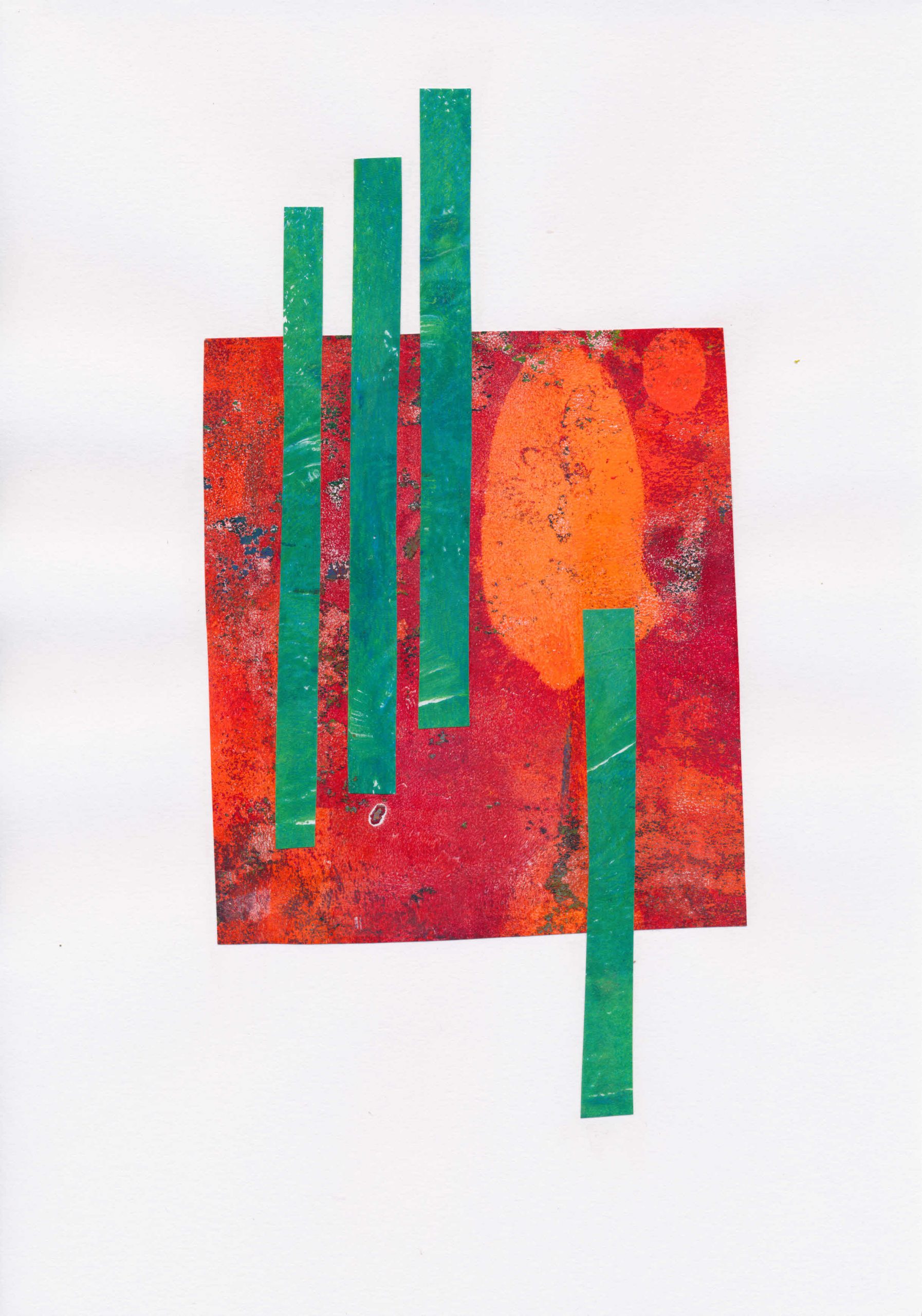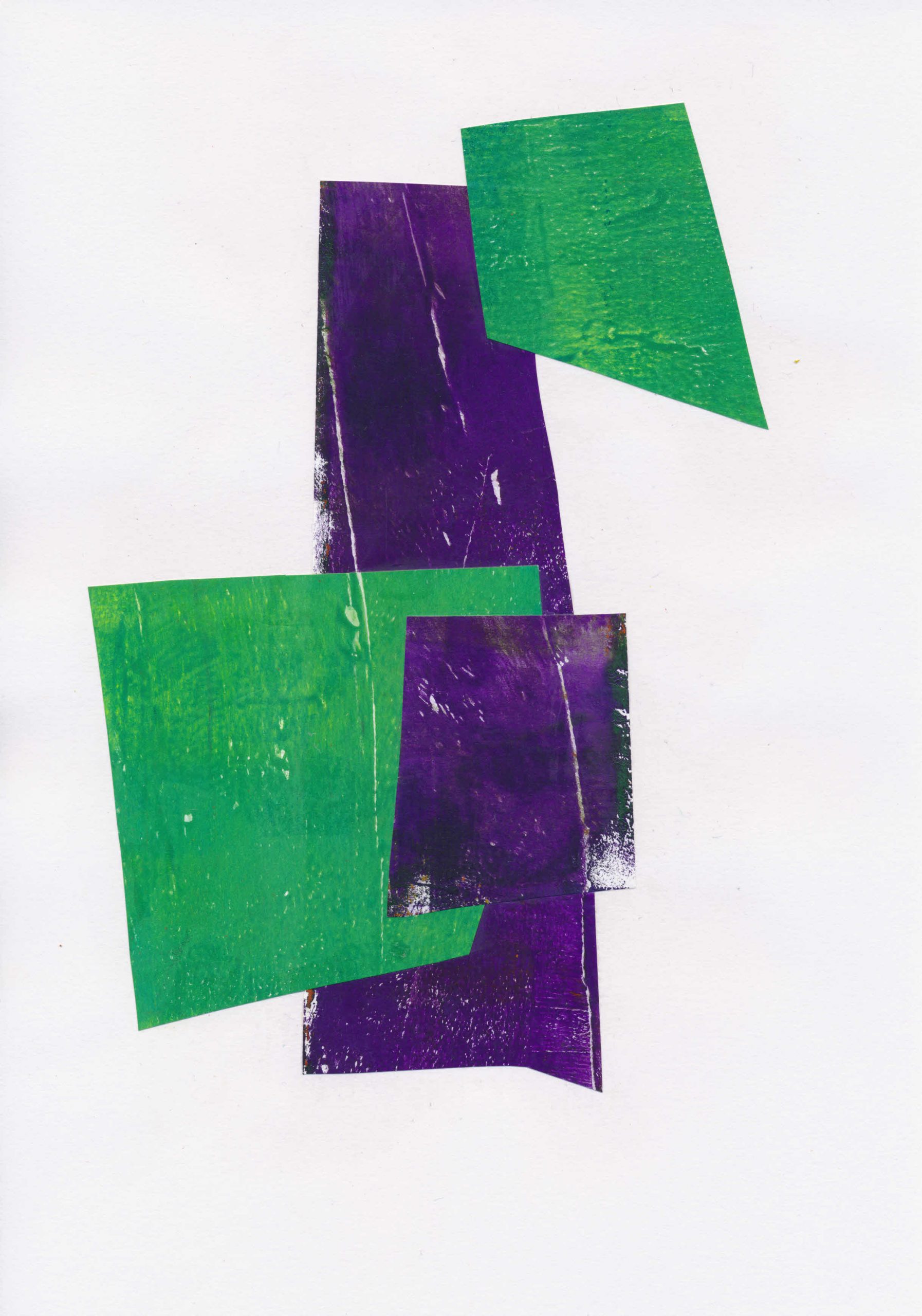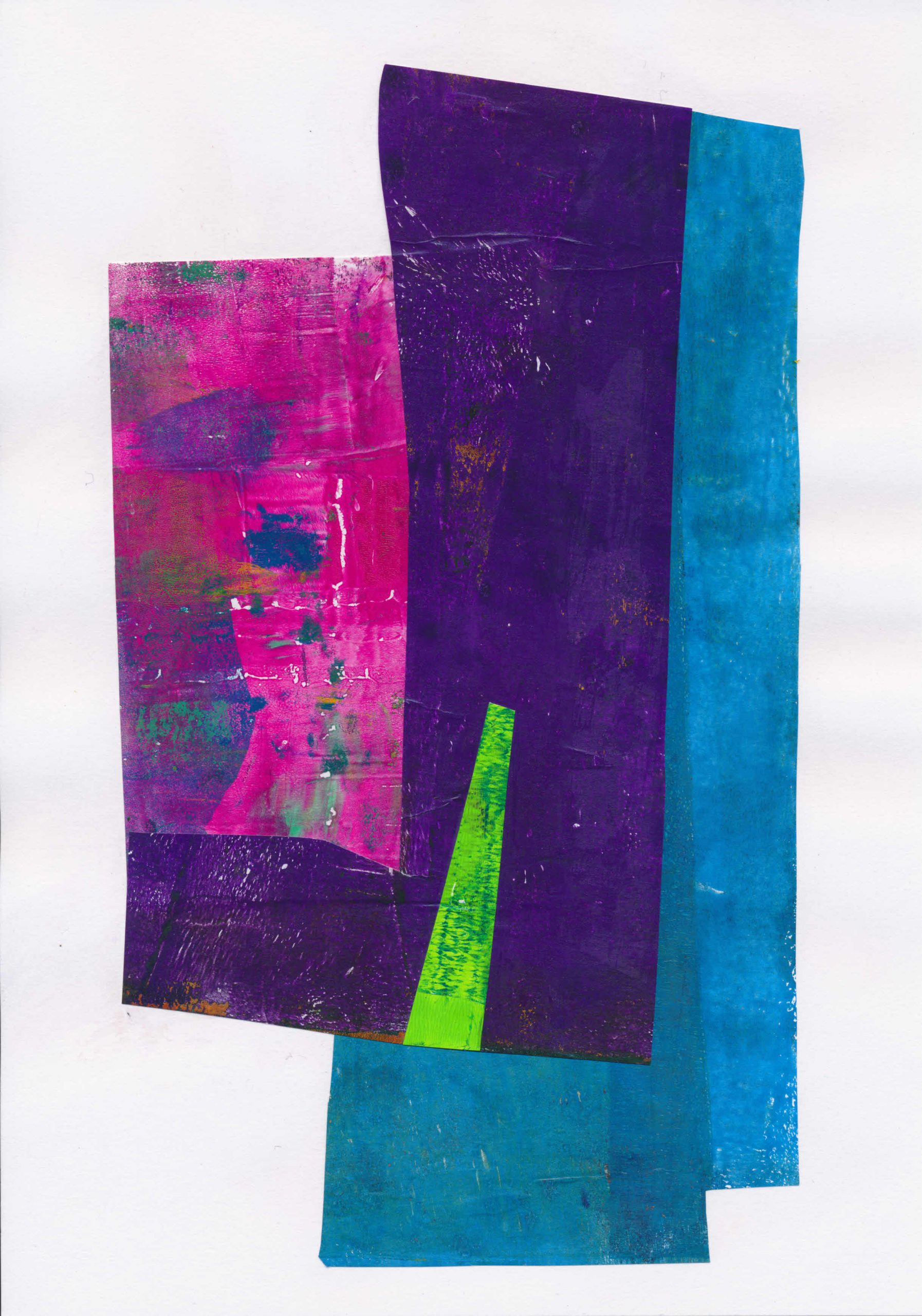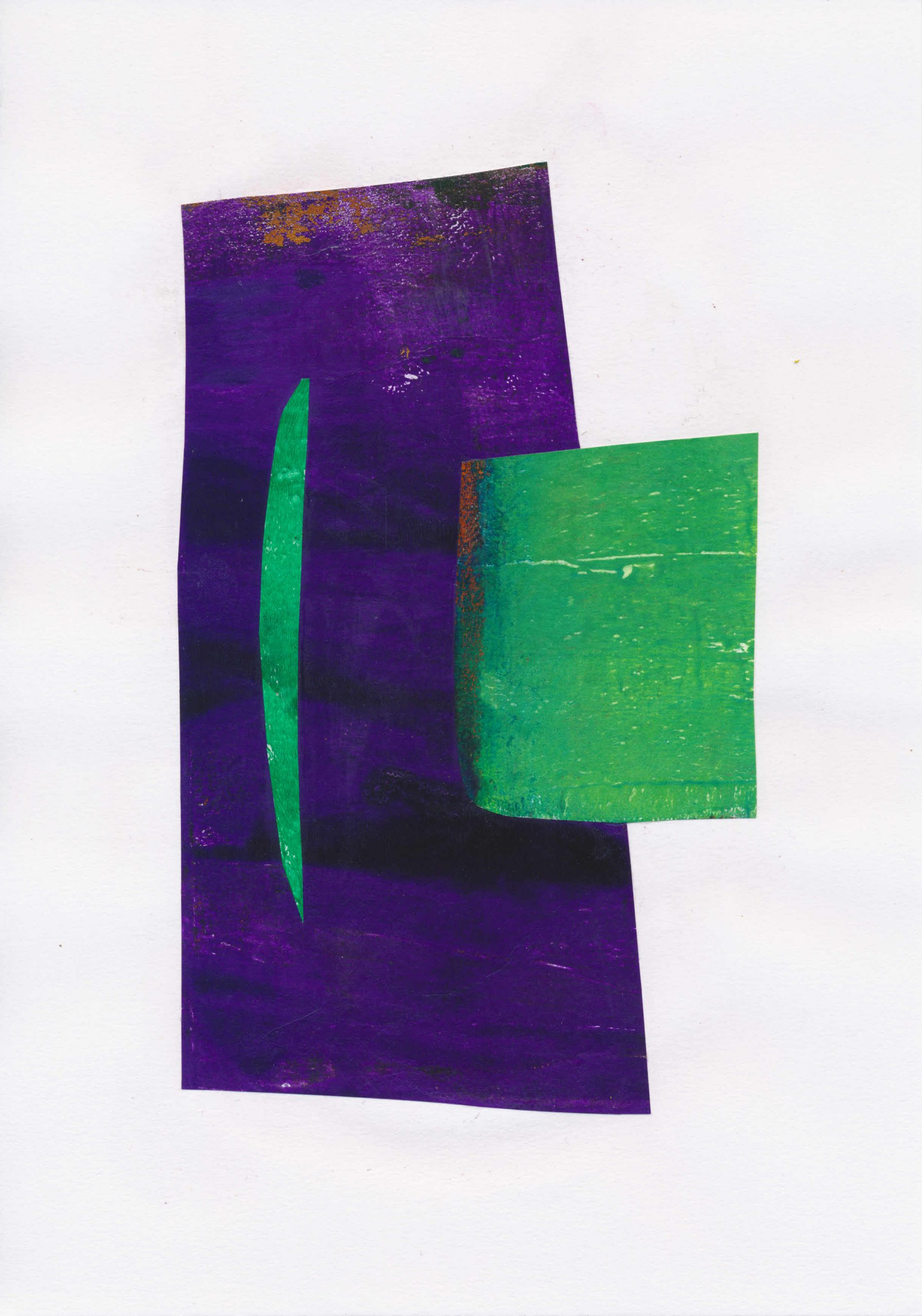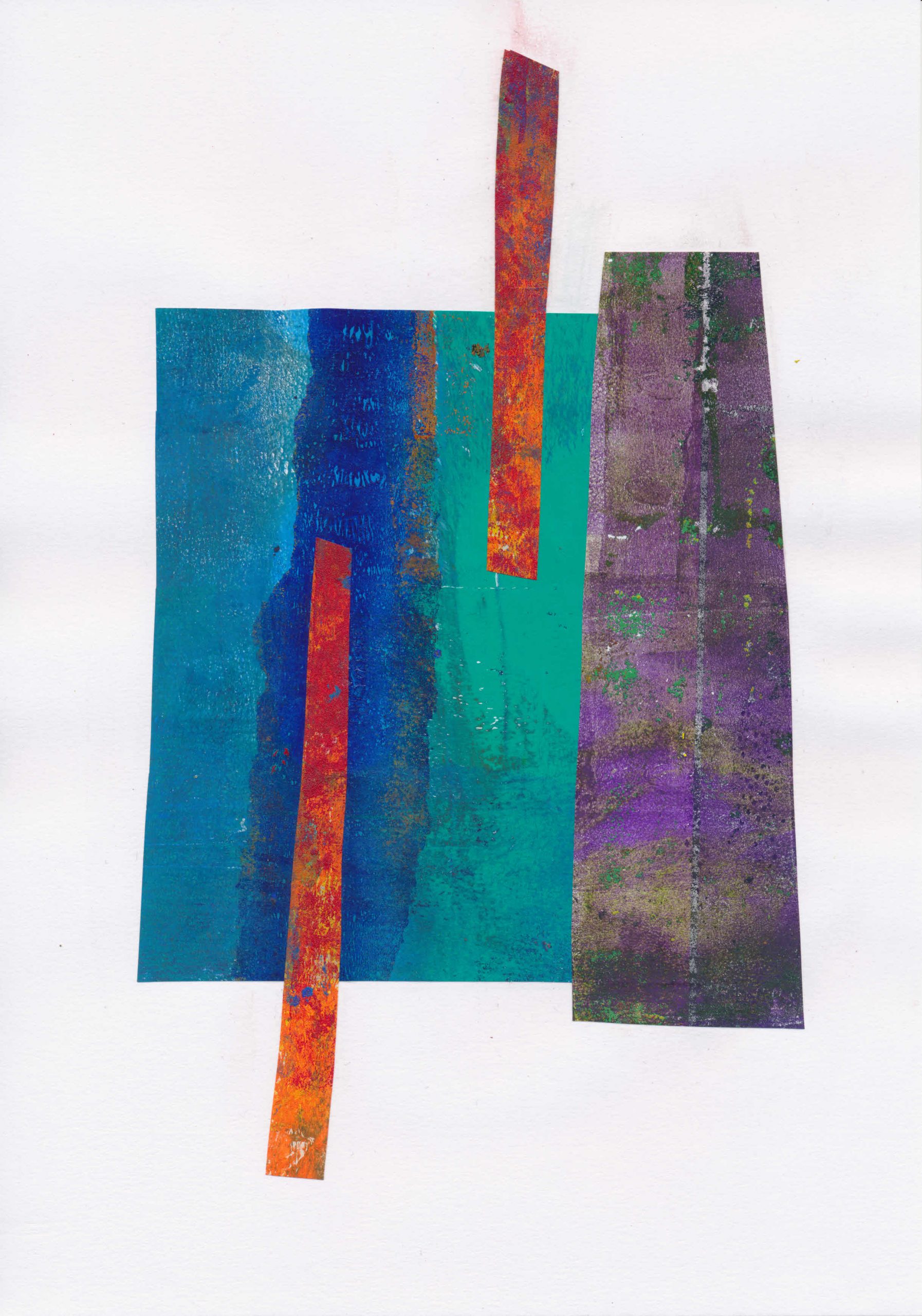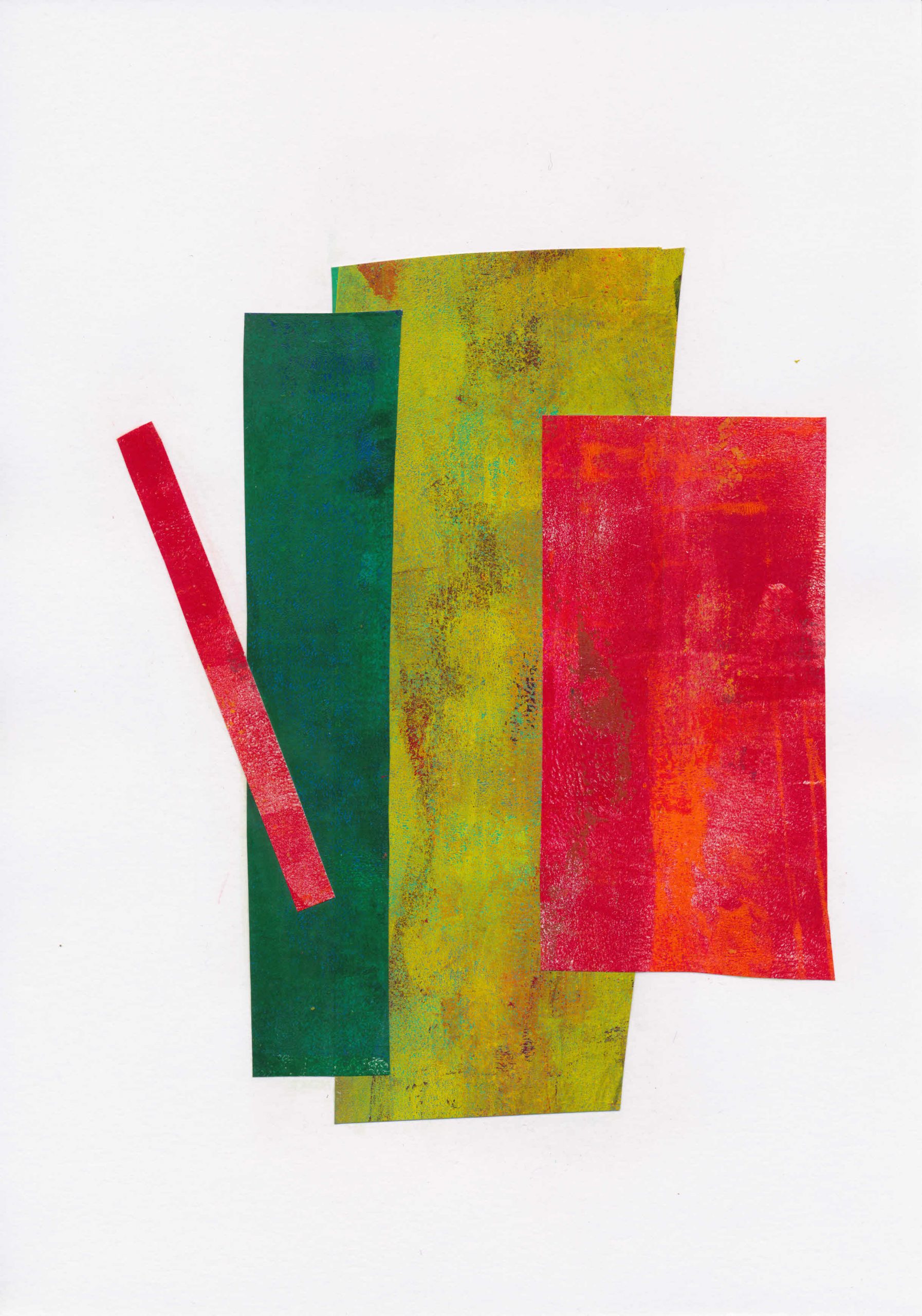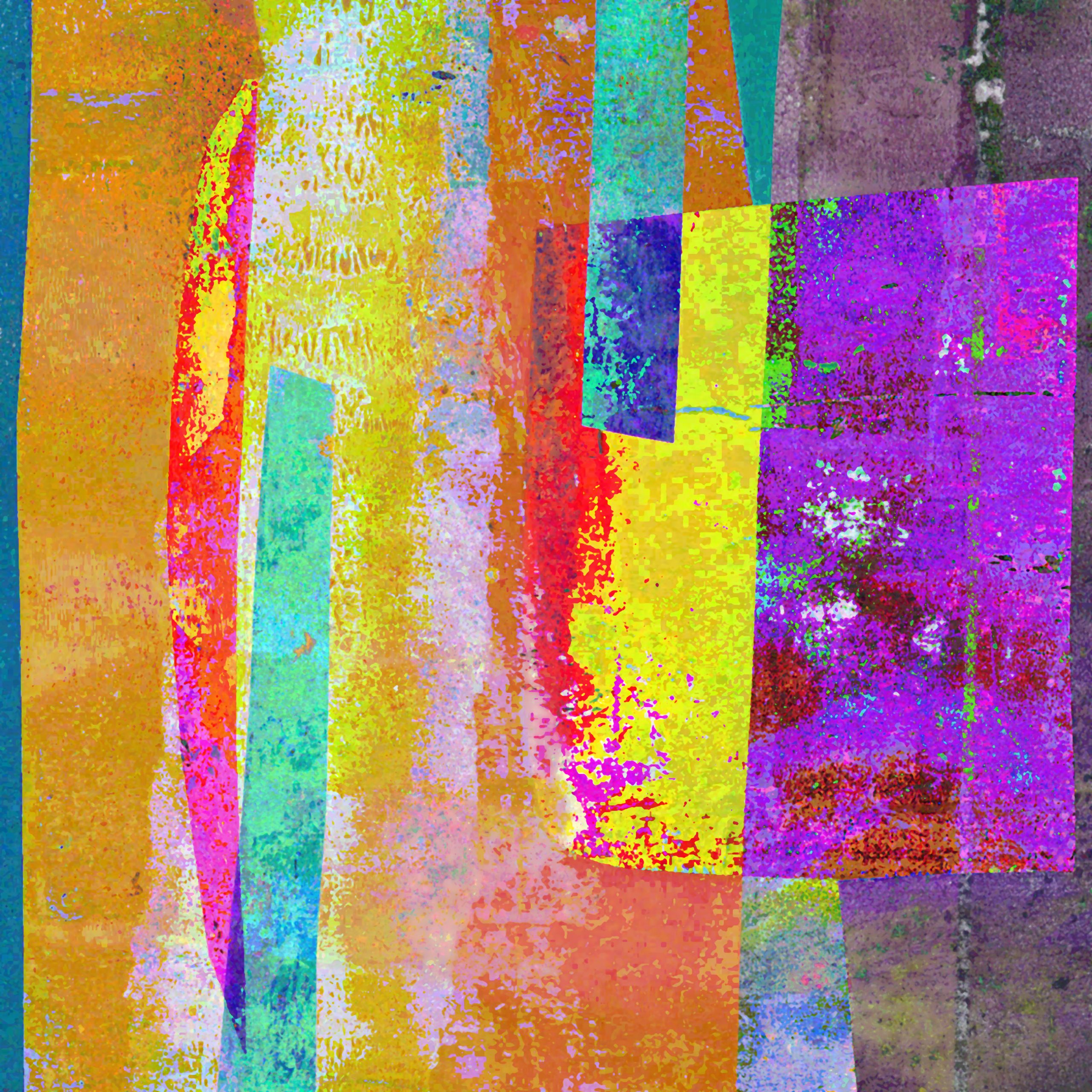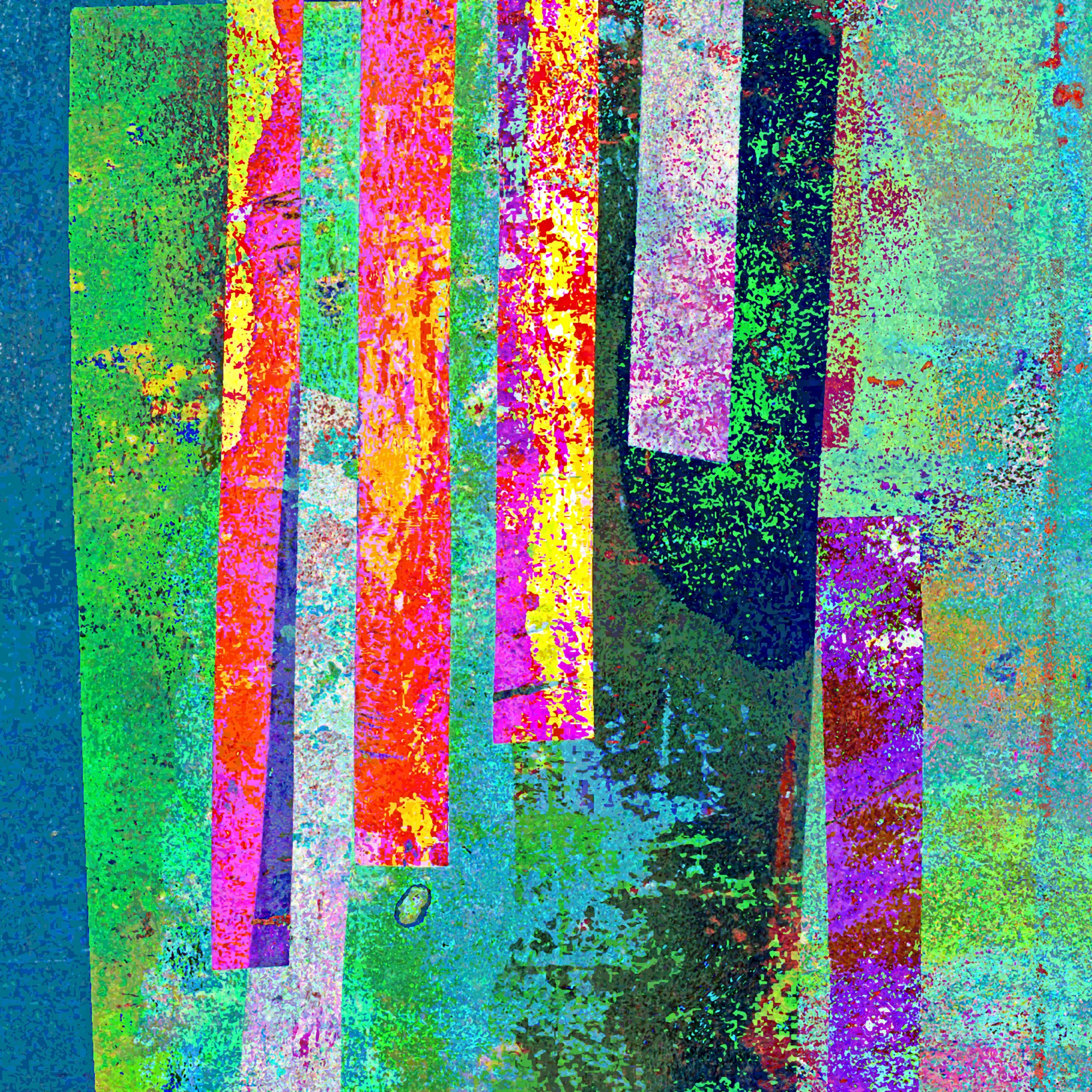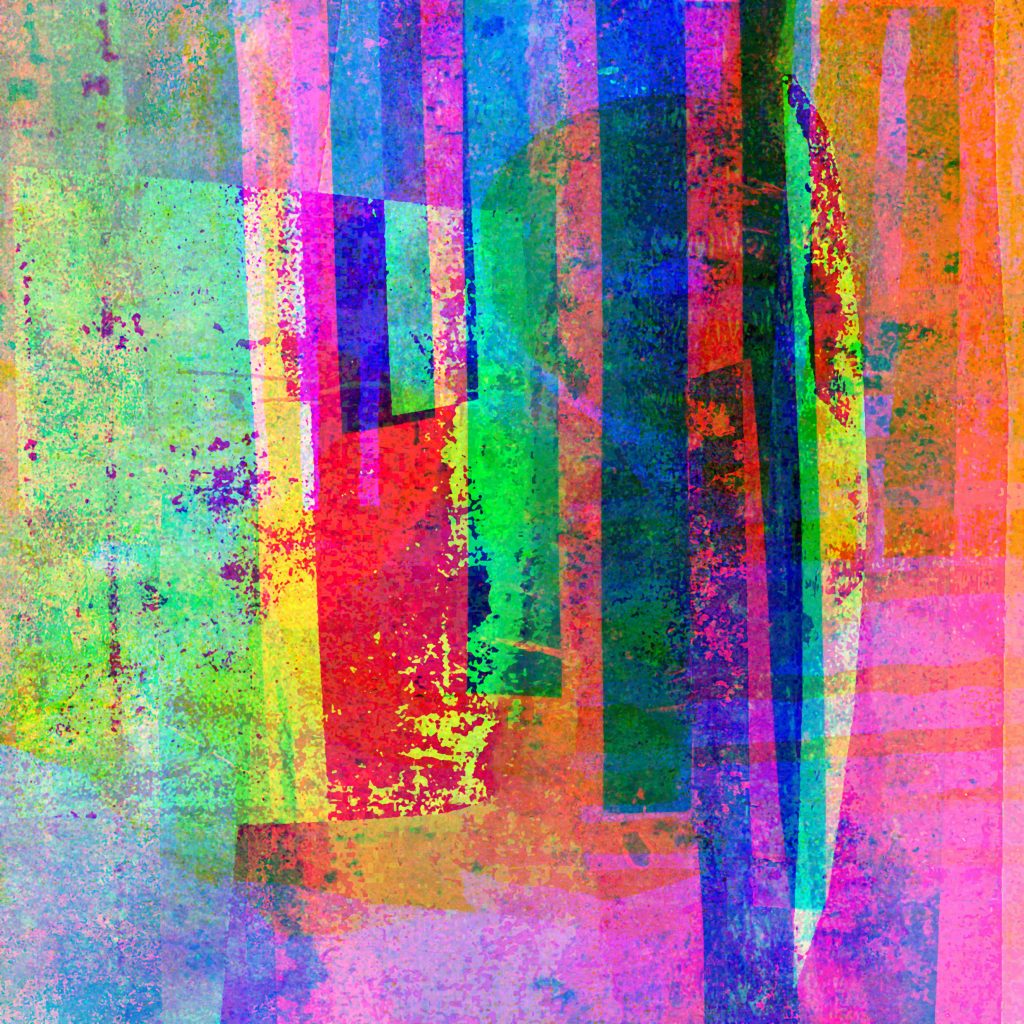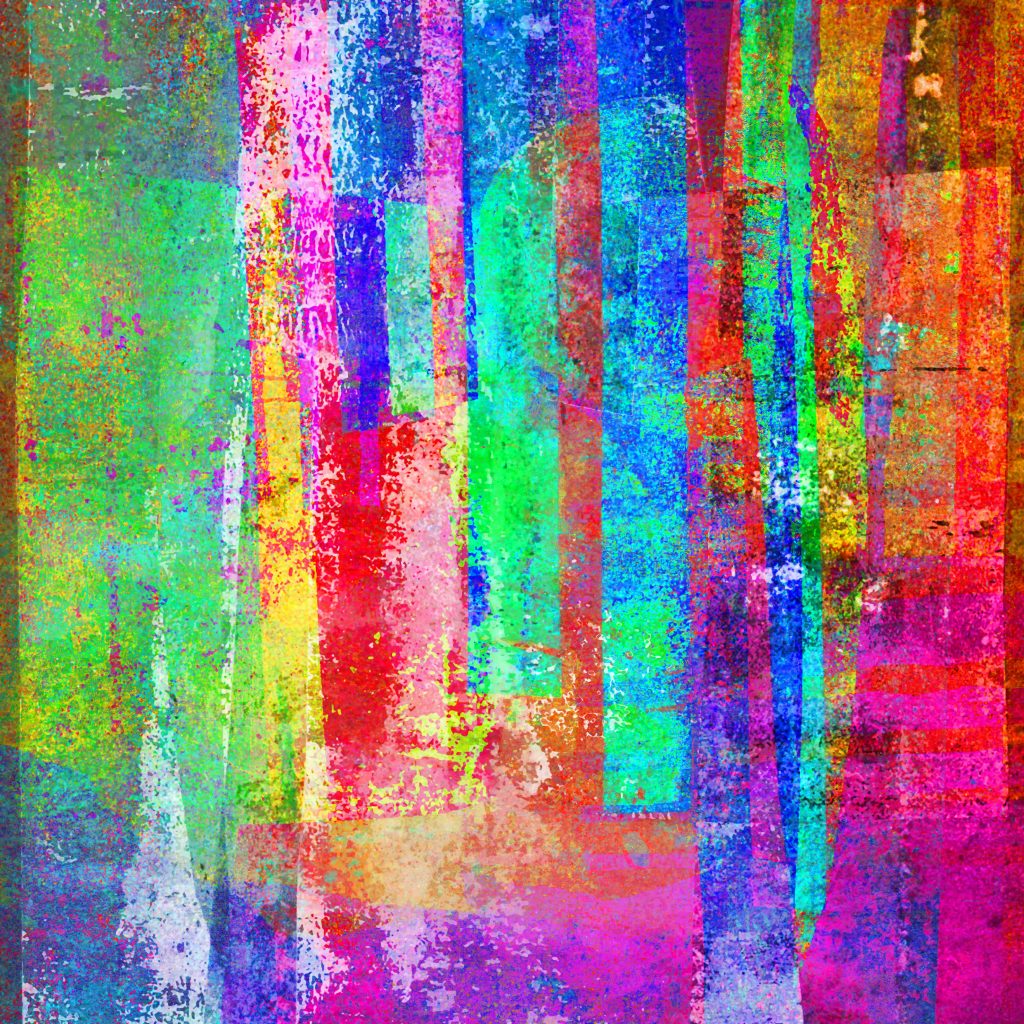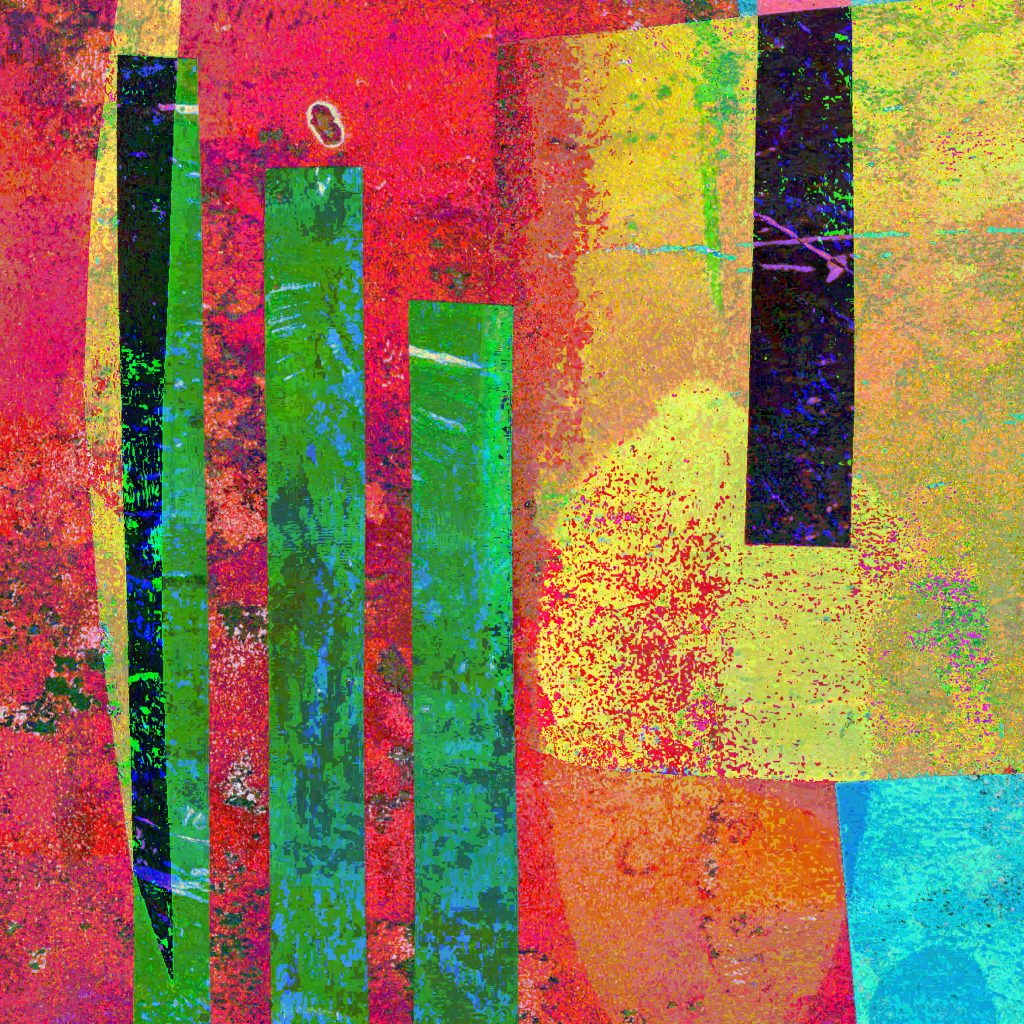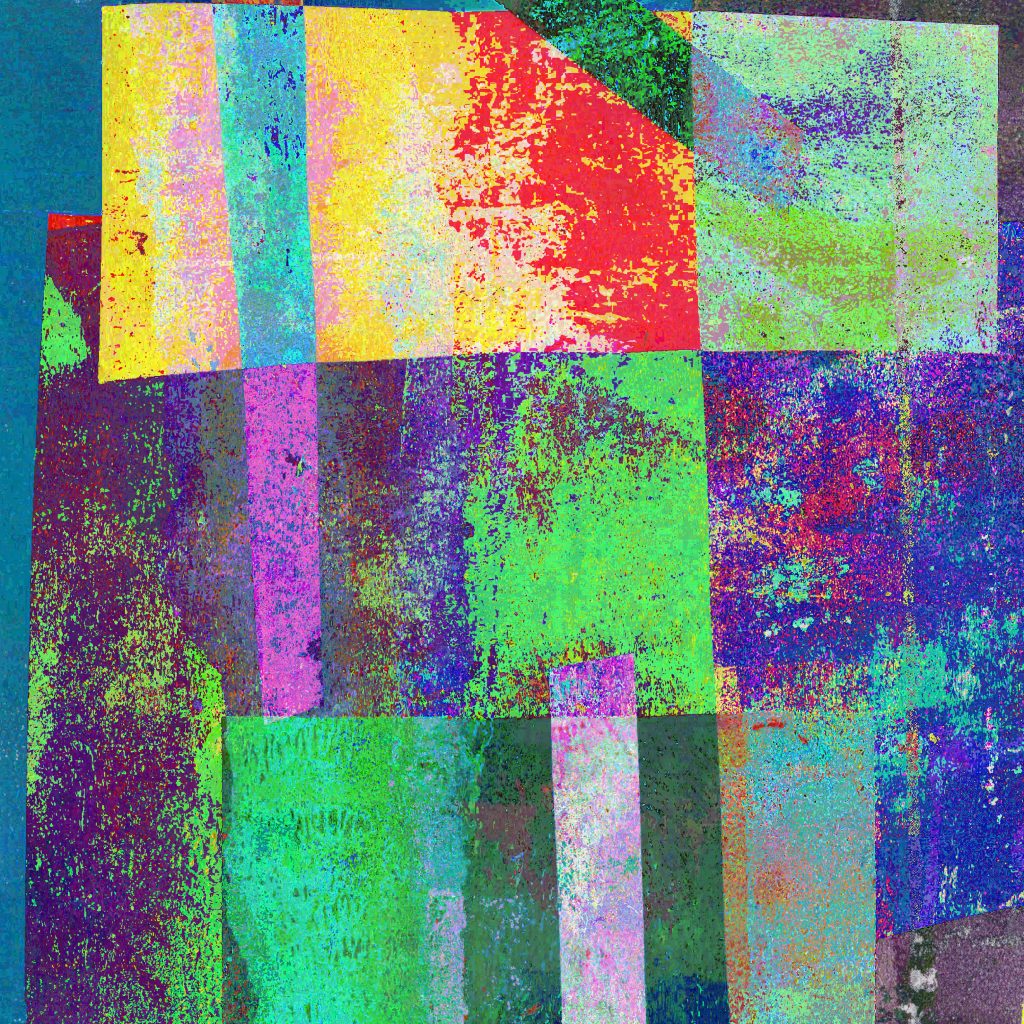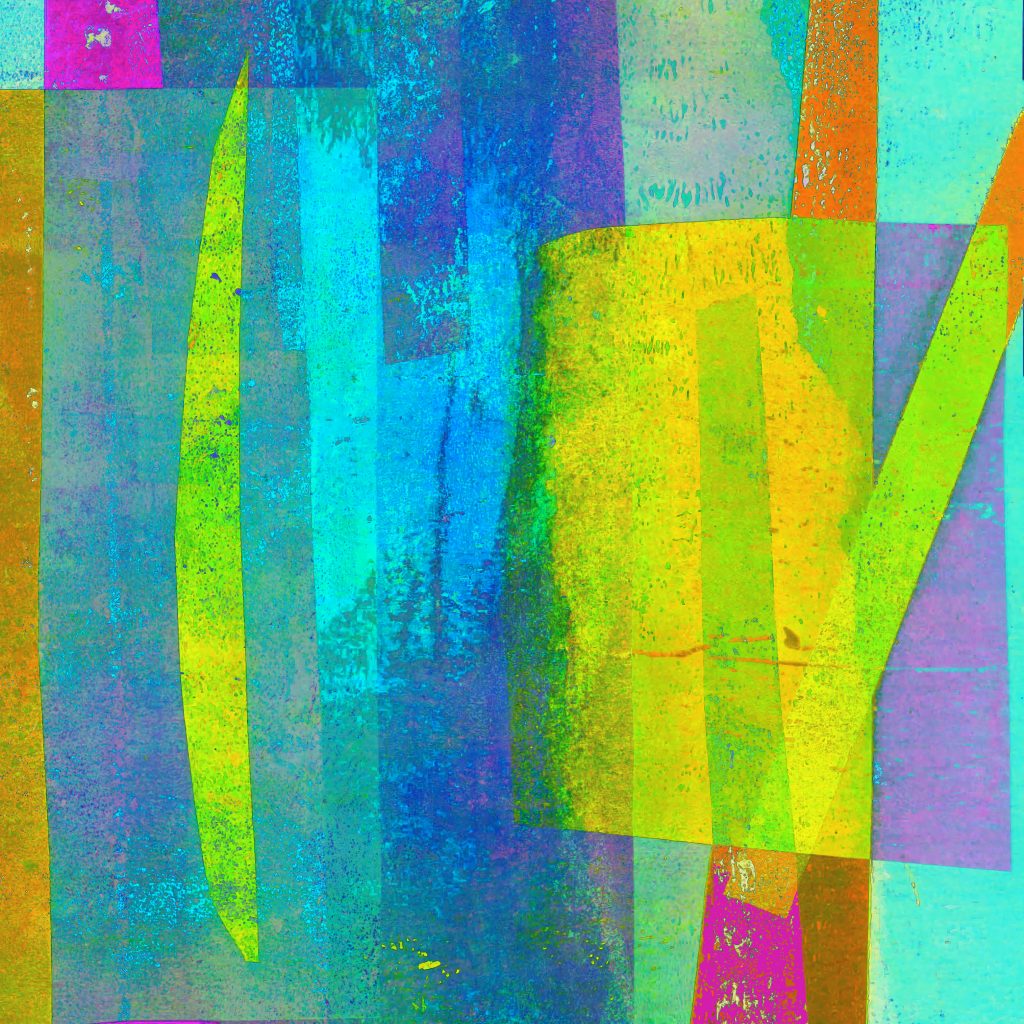
Stripes 1 is an original digital print, one of a set based on stripes. They are all available in limited editions of 70. I made it using, as a data source, scans of some of my analogue collage works (also available from the shop.)
They have a complicated pedigree. The shapes and colours come from the collage pieces. The papers I used to make those collage, were themselves made by gel printing.
I made these ‘Stripe’ images using only the native tools available in Paint Shop Pro. I used stripes for the same reason I first picked on the cross, and recently the fuji-like peak silhouette. They were a recognisable starting point. I think at the back of my mind, I probably also had the artist Sean Scully in mind.
There are of course many other artists who use the stripe in their work. See here, from the Tate, for example, or here, from a US site. In the end, the images which emerged seem much closer to the work of Johnnie Cooper, in particular the work in ‘Fractured Light: Johnnie Cooper, Collages 1992–1997‘.
My aim with the ‘Stripe’ series, and other digital images I will be adding soon, is to provide original art at a genuinely affordable price. The process that I use, takes data from existing images, but the final product is entirely new. These are genuine originals, not reproductions. There is no pre-existing image in another medium. This blog post explains more.
Each print is 27 cm x 27 cm (about 10.5″) on 30 cm x 30 cm sheets. I print to order using light fast pigment inks on 285 gsm archival quality matt paper, then sign and number each one. The edition size is 70.
Frames or mats shown in the listing are for illustration only. You have several options when buying.
- Unframed and unmounted, shipped flat in sturdy protective packaging.
- Unframed, but in a mat. Matted prints come packed with a backing board ready to drop into a standard size, 50 cm x 50 cm frame, or for you to take to your local framer. The mat colour is antique white. (Base price + £10)
- Framed and in a mat. This has a simple black moulding with acrylic glazing to reduce weight and for safety in shipping. To keep to an affordable price, the frame will be commercially produced, not hand made. This option also incurs higher shipping costs.(Base price + £35)
Follow this link for a range of other affordably priced items, all under £50.
